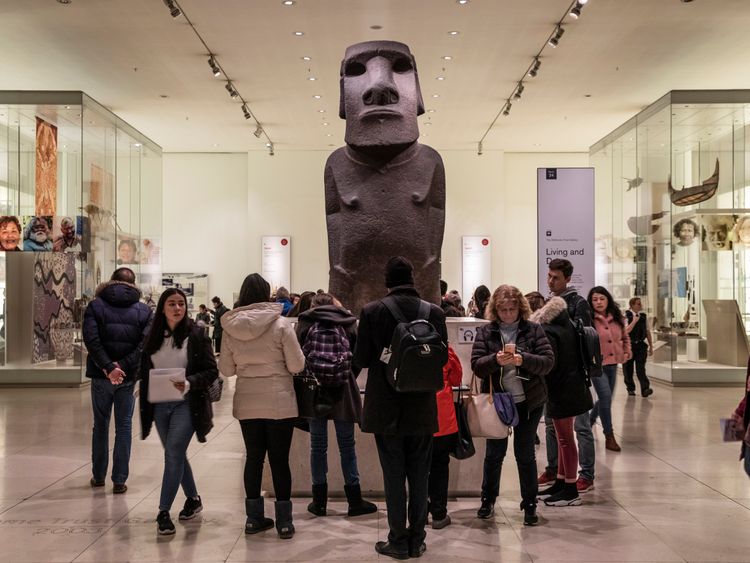Easter Island mayor says Polynesian statue should stay in the British Museum

Pedro Edmunds Paoa said Chile’s Easter Island had a “thousand” of its iconic statues, known as the Moai, “both buried, ignored and discarded” because they were unable to maintain them.
He said: “Those thousand are falling apart because they are made of a volcanic stone, because of the wind and the rain.
“We need global technology for their conservation.”
He said one statue returned to the island from the Argentine capital Buenos Aires “four or five years ago” was now in a square where stray dogs urinated on it.
Experts have argued that the British Museum should keep artefacts that originate from other countries in London where they are carefully curated and were popular exhibits with tourists from around the world.
Last month, a delegation of Chilean officials and Easter Island dignitaries travelled to London to appeal for the return of the seven-foot basalt figure, known as “Hoa Hakananai’a,” which means “lost or stolen friend” in the local language.
The statue was among 900 statues or “Moai,” meaning “ancestors,” carved by islanders between 1100 and 1600 AD.
It was taken from the island, located 2,480 miles west of the Chilean capital Santiago, in 1868 by Richard Powell, the captain of HMS Topaze, and presented to Queen Victoria who later gave it to the British Museum.
Pedro Edmunds Paoa said there had been intense debate on the island about whether the Hoa Hakananai’a should be returned or not.
He said: “Are we going to bring the ancestors back? Fantastic. We are going to bring them back and we are going to place them where?
“That Moai is in a museum where six million people come each year to visit it.”
He suggested that he would prefer a financial commitment from the British Museum to help in the preservation of all Rapa Nui monuments.
He said: “It would not be an economic agreement, it would be an agreement to help Rapa Nui in what needs to be done in Rapa Nui for conservation”, he said, using the ancestral name of the island.
The British Museum was not available for comment.
Chile’s ministry of heritage, which has lobbied for the statue’s return, declined to comment.
Source: Read Full Article
